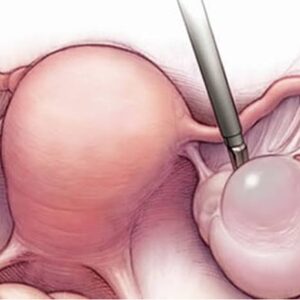Laparoscopic supracervical hysterectomy
Price range: ₹800.00 through ₹1,600.00
Learn Laparoscopic supracervical hysterectomy through our scientifically proven stepwise program. You can acquire this skill anywhere, anytime, without quitting your job and daily life.
Please read the Requirements and Commitments of each level before making a purchase. Ensure you meet the eligibility criteria to receive the product/service.
Description
Laparoscopic supracervical hysterectomy, also known as subtotal or partial laparoscopic hysterectomy, is a minimally invasive surgical procedure used to remove the uterus while preserving the cervix. It is performed using laparoscopic instruments and a camera inserted through small incisions in the abdomen. Here are the steps, indications, and a brief note on why gynecological surgeons should possess this surgical skill:
Steps:
- Anesthesia: The patient is placed under general anesthesia.
- Incisions: Usually, three to four small incisions (each about half an inch) are made in the abdominal wall to insert laparoscopic instruments.
- Pneumoperitoneum: Carbon dioxide gas is introduced into the abdominal cavity to create a working space.
- Laparoscope Insertion: A laparoscope (a thin, lighted camera) is inserted through one of the incisions to provide a magnified view of the pelvic organs.
- Instrument Placement: Additional incisions are made to accommodate specialized instruments, such as graspers, scissors, and electrocautery devices.
- Uterine Manipulation: The surgeon carefully manipulates the uterus to separate it from the surrounding tissues.
- Uterine Artery Ligation: Blood vessels supplying the uterus are ligated (tied off) and cut to prevent bleeding.
- Uterine Dissection: The uterus is dissected away from its attachments to surrounding structures, including the ovaries and ligaments.
- Cervical Separation: Once the uterus is freed, the surgeon separates it from the cervix. However, the cervix is typically left intact in this procedure.
- Closure and Recovery: After confirming that there is no bleeding or residual tissue, the surgeon removes the instruments, releases the gas, and closes the incisions.
Indications:
Laparoscopic supracervical hysterectomy is indicated for various gynecological conditions, including:
- Benign Uterine Conditions: When uterine conditions such as fibroids, adenomyosis, or uterine prolapse require surgical intervention.
- Menstrual Disorders: For women with severe menstrual disorders, heavy bleeding, or chronic pelvic pain that does not respond to conservative treatments.
- Pelvic Pain: When chronic pelvic pain is attributed to uterine issues, and other treatments have been ineffective.
- Preservation of the Cervix: For women who prefer to retain their cervix for personal or medical reasons.
Importance for Gynecological Surgeons (Short Note):
Gynecological surgeons should be skilled in laparoscopic supracervical hysterectomy because it provides an option to remove the uterus while preserving the cervix. This procedure is valuable for patients who wish to retain their cervix for various reasons, including maintaining sexual function or cultural preferences. It offers the benefits of minimally invasive surgery, including smaller incisions, less postoperative pain, shorter hospital stays, and faster recovery times. Possessing this skill allows gynecological surgeons to provide personalized, patient-centered care while addressing the specific needs and preferences of their patients.
Additional information
| Levels | Level-1, Level-2, Level-3 |
|---|
General Inquiries
There are no inquiries yet.







